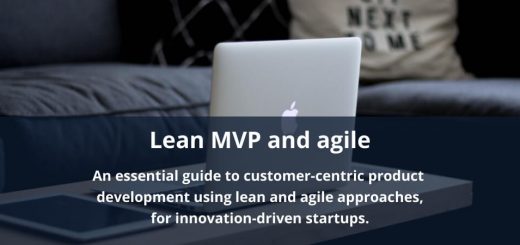How to Manage Resource Constraints in Critical Chain Project Management (CCPM)
 Perhaps, managing resource constraints in projects is one of most intricate tasks that project managers have to deal with. Fortunately, there is a methodology called Critical Chain Project Management (CCPM) that lets cope with that task by allowing project managers to track aggressive schedules and managing highly skilled and high price resources..
Perhaps, managing resource constraints in projects is one of most intricate tasks that project managers have to deal with. Fortunately, there is a methodology called Critical Chain Project Management (CCPM) that lets cope with that task by allowing project managers to track aggressive schedules and managing highly skilled and high price resources..
While you as a project manager have to concentrate on the project’s critical path and manage restricted resources, the CCPM methodology provides a big picture view of the project delivery process through planning and managing the critical chain of resources.
Critical chain project management makes it possible to undertake a special optimization process that combines the task-dependent critical path with the resource-dependent activities that have an impact on the completion date.
In this article, we will explain how to manage resource constraints through the CCPM methodology and track the project’s critical chain.
What is a Constraint in Project Management?
In project management, the term “constraint” generally refers to a limiting factor that affects the project completion. For instance, a constraint may refer to a technical issue that might prevent a project from being delivered on time. A constraint may also be an economic issue such as the cost of building the new community center.
Each project deals with multiple constraints that prevent the project from proceeding as it should. It is crucial that you understand which of these constraints are critical to the success of your project.
The most common constraint in project management is the availability of resources. This refers to manpower, technological and financial resources necessary to complete a task. For example, for activity A1 (manpower) to be completed on time, the minimum level of staffing for activity A1 will be 2 days.
Another type of constraint includes the project management process itself, e.g., poorly defined scope, ineffective team members, lack of project management skills, etc. The same applies to the schedule’s critical path. There are tasks that must be completed before other activities in order for the project to move forward smoothly.
For instance, if you want to complete an activity A1 in 10 days but it has to wait for resources from activity A2 (10 days), then activity A1 is on the critical path of activity A2.
The Theory of Constraints
The theory of constraints (ToC) is a classical problem-solving methodology, formulated in the 1970s. It is used in business, industry, and government to analyze any given situation. ToC helps determine how to remove constraints and create forward movement. The theory is based on the idea that there is one main constraint within a system, keeping it from increasing production and decreasing the lead times.
The ToC has gained popularity in project management for its clear-cut philosophy and simple implementation. In order to keep a project moving according to plan, there must be a “path of least resistance” planned out to guide the project through this constraint. By analyzing the process and determining which parts are bottlenecks, you can take steps to relieve the constraint.
ToC helps project managers determine how to best deal with the constraints they face. It also provides a technique for establishing performance metrics and measuring progress. There are two main approaches for applying ToC to project management: the “push,” or “outside-in,” approach, and the “pull,” or “inside-out,” approach.
- The “Push” Approach. The “push” approach is when ToC analysis is used to focus attention on the project’s constraints. It calls for project team members to implement changes in order to reduce or remove the constraints. This will require the team to assign responsibility for the changes, and then provide “diffusion” (that is, information or motivation that allows project objectives to be achieved) to contractors and suppliers.
- The “Pull” Approach. The “pull” approach is when ToC analysis makes it possible to identify the time constraint in particular tasks. This methodology requires gathering information about all of the assumptions made in performing activities. The project manager needs to determine how much slack is available for each activity. If you are unsure of the amount of slack, then you must use an “alternate” or “flexible” estimation that takes into account the level of uncertainty.
Understanding a Project’s Critical Chain
This is a crucial stage in the project timeline, when the project’s critical path becomes apparent to you.
The critical path is a sequence of tasks in a project that determines the completion date. Each task will have its own time estimate, and when all of these time estimates are added up, the sum will equal the total duration of the project. In order do this calculation quickly and accurately, you can use various online calculators for scheduling projects that are available on the Internet.
At this stage, you will be able to track and plan the critical path for your project. You will also determine which tasks must be completed before other activities so that the project can keep moving forward along its route. You can use the CCPM methodology to evaluate the duration of each task and track time allocations.
CCPM Methodology Defined
Critical Chain Project Management (CCPM) is a scheduling methodology for managing time and resources across tasks within the project management process. CCPM is used by project managers to define, assess, and monitor the critical chain for projects.
The CCPM methodology, among other things, provides project managers with an overall overview which allows them to take into account the time (and cost) associated with activities across the task network. This in turn allows these managers to manage their constrained resources in order to utilize them effectively in order to deliver on time.
The purpose of CCPM is to eliminate any delays and waste due to the lack of resources. By focusing on the project’s critical path and removing any bottlenecks that might be obstructing it, CCPM helps ensure that every task gets done on time and within budget.
CCPM is widely used in the construction industry and it has seen special popularity in manufacturing manufacturing. It is also used in various fields such as engineering, where business practices are sometimes too complex for just any management method to cope with.
Critical Chain Gantt Chart
CCPM uses a special Gantt chart to reflect the fact that additional resources are assigned to activities on the critical path. These activities are called critical chain schedule (CCS) activities. These activities include those that must be completed before other activities in the project.
The critical chain schedule (CCS) is a Gantt chart that shows the various activities and tasks, along with their start and finish dates, in order to determine where to allocate resources. The CCS is an integral part of the critical chain because it shows which tasks must be completed before other activities.
There are three steps you must make in order to create a Gantt-chart-like critical chain schedule. First, you compare all of the initial tasks and resources with the requirements of the project. Second, you remove delays due to human error and other causes that keep tasks from being completed on time. Third, you define all relationships between each of the activities.
Critical chain scheduling also involves prioritizing the project’s activities and resources. By completing resource-intensive activities first, you are able to avoid delays that might occur in the future.
CCPM Process
In simple terms, Critical Chain Project Management is a structured process for planning, designing and controlling a project schedule considering available project resources. If looking at the CCPM process at a higher level, it includes the following steps:
- Reducing the number of individual tasks assigned to each team member.
- Leveraging project resources to remove any resource contentions.
- Managing resource constraints through limiting or eliminating multitasking.
- Scheduling independent tasks that have no predecessors at a later time/date – this will let focus on critical tasks.
- Encouraging teams in completing the tasks as quickly as possible – this can be done through focusing the people on the importance of start times and aggressive task completion (rather than due dates).
- Creating a project buffer for dependent tasks to determine a portion of the safety margin time that that protects the project from missing the scheduled end dates and deadlines.
- Creating a capacity buffer that determines on-call project resources available to avoid delays due to unforeseen issues happened with the project budget.
- Creating a resource buffer that determines limits of the critical resource chain.
- Managing all the buffers of the project to maintain preventive and corrective actions.
Through following Critical Chain Project Management concepts it becomes easier to manage both single-project and multi-project environments. The key steps of the CCPM process can be applied to shared projects. Managing resource constraints in multi-project environments is based on the completion date of each individual project for while the overall completion schedule for all the projects there should be visibility to resource conflicts that make a true picture of the overall project management environment.
3 Steps in Critical Chain Management
There are three critical steps to ensure project success with CCPM scheduling methodology. Below we show some details of each of them.
1. Establishing Critical Path.
To follow the CCPM process, it is important to establish the critical path by identifying every activity on the project schedule along with their start and finish date. The team members must then work together to measure the duration of each task in terms of time units that are projected for these tasks. Based on this measurement, you must also measure the time required by each task, which will help you determine if any bottlenecks exist in your critical path.
2. Developing a Resource Allocation Model.
Based on the critical path, it is also important to allocate resources to each project task based on the resources that you have available. The team must then identify any resources that are not being used at their optimum capacity to limit additional resource contentions.
3. Determining Available Resources and Constraints.
In order to determine resource constraints and available resources, you can use a Gantt chart based on predetermined start and finish dates for each of the project tasks. You must then test the critical path for delays and resource contentions to ensure that each task has enough resources to complete on time. You should also determine the project buffers that are required to maintain all of the tasks on schedule.
The CCPM process helps you to develop a project schedule that considers the available resources and the critical path for each project. This is a very useful process in the learning curve of project management, so if you are looking for a better way to manage your projects, CCPM might be a great method.There are three critical steps to ensure project success with CCPM scheduling methodology. Below we show some details of each of them.











